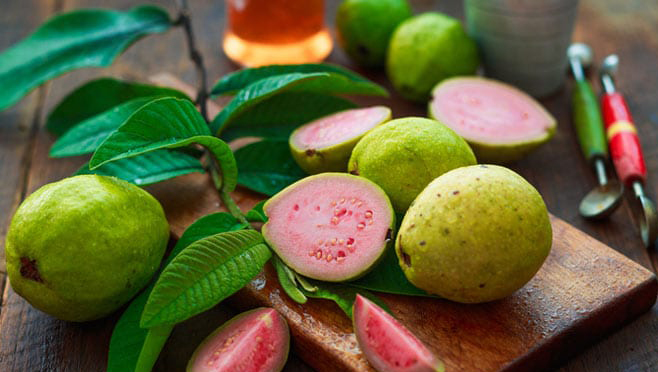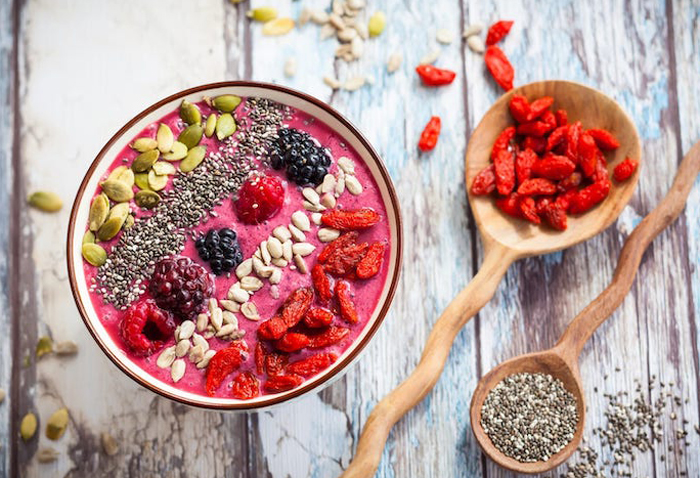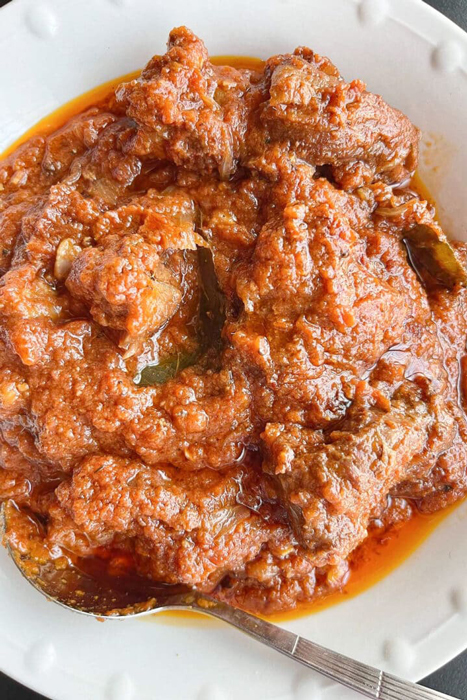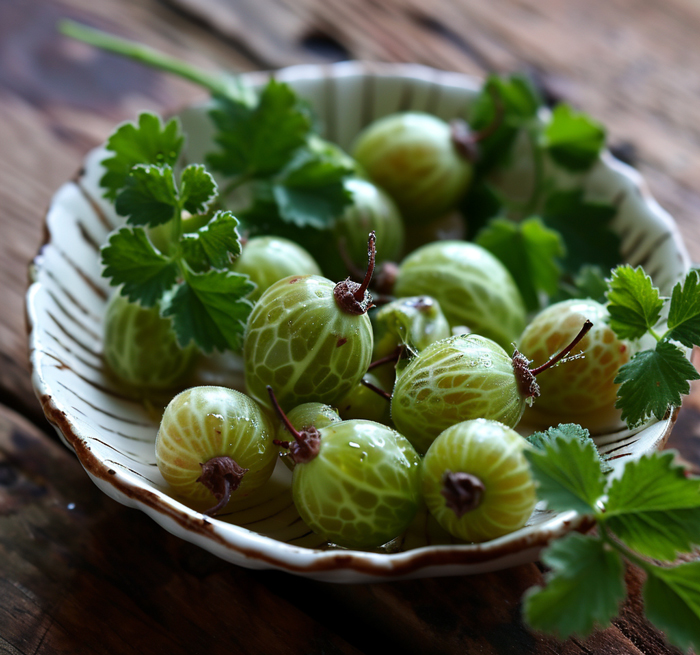Gourmet delights or simple grub, the letter ‘G’ gleams in the galaxy of gastronomy, especially when it comes to breakfast foods. From the corners of continental Europe to the vibrant streets of Asia, breakfast dishes that commence with ‘G’ not only offer a gustatory treat but also promise a good start to the day.
In this enlightening exploration, we will journey through the global spread of morning meals, unearthing delicious options that begin with this grand letter. Whether you’re a gourmand or someone seeking simple gratification, there’s something under ‘G’ that’s guaranteed to gratify your morning appetite. Let’s embark on this gastronomic journey and discover the goodness that ‘G’ brings to our breakfast plates.
Breakfast Foods That Start With The Letter G
The world of breakfast foods is vast and varied, a global gallery filled with gastronomic gems. Among these, foods that begin with the letter ‘G’ hold a special place, offering flavors that range from the simple to the sophisticated. Whether you’re looking to grace your morning with a gourmet treat or searching for a quick grab-and-go option, there’s something that starts with ‘G’ to gratify your taste buds. In this article, we journey through the globe, exploring breakfast foods starting with this glorious letter.
1. Granola
Origin: Rooted in the health movements of the late 19th century America.
Preparation: A baked mixture of oats, nuts, and sweeteners like honey or sugar, often combined with dried fruits.
Serving Suggestions: Perfect with yogurt, milk, or as a standalone snack.

2. Grits
Origin: A staple in the American South, with Native American origins.
Preparation: Ground corn simmered in water or milk until a porridge-like consistency is reached.
Pairings: Often accompanied by cheese, shrimp, or gravy.

3. Guava
Origin: Native to tropical areas in Central and South America.
Benefits: This fruit is a vitamin C powerhouse and provides a refreshing, sweet-tart taste.
Serving Suggestions: Best consumed fresh or in smoothies and juices.

4. Goji Berries
Origin: Ancient China, where they’ve been consumed for their medicinal and health benefits.
Benefits: Packed with antioxidants, these berries are considered a superfood.
Usage: Often found dried and sprinkled on cereals, oatmeal, or in smoothies.

5. Griddle Cakes
Origin: Variants exist in various cultures, but they’re especially popular in the United States.
Preparation: A batter made from flour, eggs, and milk, poured onto a hot griddle.
Serving Suggestions: Typically enjoyed with syrup, butter, or fruit toppings.

6. Greek Yogurt
Origin: Greece, though yogurt itself has been part of many ancient cultures.
Characteristics: Strained yogurt, resulting in a thicker consistency and higher protein content.
Pairings: Delicious with honey, nuts, or fresh fruits.

7. Galettes
Origin: France, particularly the Brittany region.
Preparation: A thin pancake made from buckwheat flour.
Fillings: Can be filled with a variety of ingredients, from ham and cheese to eggs.

8. German Pancakes
Origin: Despite the name, they’re more associated with the American breakfast scene.
Preparation: A puffy oven-baked pancake, typically baked in a cast-iron skillet.
Toppings: Often dusted with powdered sugar and served with lemon wedges.

9. Green Smoothies
Origin: A modern health trend, popular worldwide.
Preparation: A blend of green vegetables, like spinach or kale, with fruits and liquids.
Benefits: A nutrient-dense start to the morning, offering vitamins, minerals, and fiber.

10. Guacamole
Origin: Ancient Aztecs in what’s now Mexico.
Ingredients: A mix of mashed avocados, lime, onions, tomatoes, and chili peppers.
Breakfast Usage: An excellent spread on toast or as a side with scrambled eggs.

11. Ghee
Origin: Ancient India, a crucial element in both culinary and medicinal practices.
Preparation: Clarified butter, with milk solids removed.
Usage: Used as a cooking medium or spread, adding richness to dishes.

12. Grapefruit
Origin: An accidental hybrid in Barbados in the 18th century.
Benefits: Low in calories, rich in antioxidants, and known for its tangy-sweet flavor.
Serving Suggestions: Eaten fresh, in salads, or juiced.

13. Genoa Cake

Origin: This dense, chewy cake hails from Siena, Italy, where it was originally enjoyed during Christmas celebrations. Its origins date back to the Middle Ages, and its recipe has been passed down through generations.
Description: Genoa Cake is a delightful fusion of textures and flavors. Packed with dried fruits like candied orange peel, figs, and cherries, it’s also studded with nuts like almonds and walnuts. Spices like cinnamon, cloves, and nutmeg add warmth, while honey or molasses provides a rich sweetness. Unlike most cakes, Genoa Cake doesn’t rely on leavening agents, resulting in a dense, fudgy texture that’s perfect for slicing and savoring.
Breakfast Use: While traditionally enjoyed as a dessert or snack, Genoa Cake’s dense, nutritious composition makes it a surprisingly satisfying breakfast option. Its complex carbohydrates provide sustained energy, while the nuts and dried fruits offer a good dose of healthy fats and vitamins. Serve thin slices with yogurt or a drizzle of honey for a decadent yet nutritious start to the day.
14. Gnocchi

Origin: These pillowy potato dumplings originated in Northern Italy, likely in the region of Lombardy. Their exact origin story is shrouded in mystery, but their popularity has spread far and wide.
Description: Gnocchi are small, light dumplings traditionally made with mashed potatoes, flour, and egg. Their signature texture comes from a delicate balance of ingredients and cooking methods. Boiled until they float to the surface, gnocchi are then often pan-fried with butter and sage, creating a crispy exterior and a soft, melt-in-your-mouth interior.
Breakfast Use: Gnocchi might not be your first breakfast choice, but they can be a surprisingly versatile and delicious option. Leftover gnocchi from dinner can be transformed into a quick and satisfying breakfast scramble. Simply sauté them with chopped vegetables, cheese, and a fried egg for a protein-packed and flavorful start to the day. For a lighter option, try gnocchi in a light broth with fresh herbs and a squeeze of lemon.
15. Goat Meat

Origin: While goat meat is enjoyed in various cuisines globally, its consumption in Bangladesh dates back centuries. Traditionally raised in rural areas, goat meat is prized for its distinctive flavor and versatility in dishes.
Description: Goat meat has a unique flavor profile, often described as slightly gamey with a hint of sweetness. Compared to other meats, it’s generally leaner and lower in saturated fat, making it a potentially healthier option. In Bangladesh, goat meat is commonly prepared in curries, stews, and biryanis, often with warming spices like cumin and coriander.
Breakfast Use: While goat meat might not be a typical breakfast food in most cultures, it’s a traditional ingredient in some Bangladeshi breakfast dishes. Goat meat stews or curries served with rice or flatbreads like paratha can be a hearty and flavorful option, especially during colder months. The lean protein and warming spices provide sustained energy and can help keep you feeling full until lunchtime.
16. Goats Cheese

Origin: This creamy delight boasts a rich history, with cheesemaking from goat’s milk dating back thousands of years across Europe and the Middle East. Today, France, Spain, and Italy are renowned for their diverse varieties, each with its own unique flavor and texture.
Description: Goats cheese comes in a spectrum of styles, from soft and spreadable to firm and crumbly. Its tangy flavor profile, often described as slightly citrusy or grassy, is a delightful departure from cow’s milk cheese. The tanginess is due to the higher lactic acid content, a natural byproduct of the bacteria used in the cheesemaking process. This tanginess is balanced by a subtle sweetness and a rich, creamy texture that melts in your mouth.
Breakfast Use: Goats cheese’s versatility shines at breakfast. Spread it on toast for a simple yet sophisticated start. Crumble it over scrambled eggs for a touch of luxury. Pair it with fresh fruit like berries or figs for a sweet and savory contrast. For a fun twist, try whipping goats cheese with honey and herbs for a dip with whole-wheat crackers or pita bread. Its unique flavor profile will awaken your taste buds and make breakfast an adventure!
17. Gogurt

Origin: Invented in France in the 1970s, Gogurt, a squeezable yogurt pouch, was originally designed for children and quickly gained popularity worldwide. Its portability and playful packaging make it a fun and convenient way for kids to enjoy yogurt’s benefits.
Description: Gogurt comes in a rainbow of flavors, from classic strawberry and vanilla to adventurous options like mango and mixed berry. Each pouch typically contains 4-6 ounces of yogurt, making it a perfectly portioned snack or breakfast option for young children. The yogurt itself is typically sweetened with natural sugars like fruit concentrates or honey, offering a delicious way to get essential calcium and probiotics.
Breakfast Use: Gogurt’s convenience shines at breakfast time. Pack it in lunchboxes for school or pop it in the car for a quick on-the-go meal. Pair it with granola or chopped nuts for added texture and protein. Freeze overnight for a frosty treat that will keep kids cool on warm mornings. Remember, Gogurt is a great snack option, but for a complete breakfast, consider pairing it with some whole-wheat toast or fruit for a balanced start to the day.
18. Gooseberries

Origin: These tart little berries, native to Europe and Asia, have been enjoyed for centuries. They were brought to North America by colonists and quickly gained popularity for their unique flavor and versatility in cooking. Gooseberries come in various colors, ranging from green and yellow to red and purple, each offering slightly different flavor nuances.
Description: Gooseberries are small, round berries with a thin, edible skin. Their flavor is best described as tart and tangy, with hints of citrus and melon. The level of tartness can vary depending on the variety and ripeness. When ripe, gooseberries have a softer texture and a sweeter flavor.
Breakfast Use: Gooseberries’ tartness adds a refreshing zing to breakfast. Blend them into smoothies for a burst of vitamin C and antioxidants. Top yogurt or oatmeal with fresh gooseberries for a sweet and tangy contrast. Make gooseberry jam or compote to spread on toast or bagels. For a fun twist, try baking gooseberries into muffins or scones for a unique and delicious treat. Remember, gooseberries are high in fiber and low in calories, making them a healthy and refreshing addition to any breakfast table.
19. Grape Jelly

Origin: This beloved breakfast spread boasts a surprisingly deep history. While grapes have been cultivated for millennia, grape jelly as we know it gained popularity in the early 1900s in the United States. Initially, jams and jellies were made at home, with families meticulously preserving their harvests. As commercial production gained momentum, grape jelly became a pantry staple, adorning countless peanut butter and jelly sandwiches.
Description: Made from concentrated grape juice or crushed grapes, grape jelly is a sweet and sticky spread. Its vibrant purple color comes naturally from the anthocyanins found in grapes, offering a delightful visual appeal. The flavor profile is predominantly sweet, with a subtle tartness that varies depending on the grape variety and sugar content. Compared to jams, which contain whole fruit pieces, jelly has a smoother, more uniform texture.
Breakfast Use: Grape jelly’s versatility shines at breakfast. The classic pairing with peanut butter on toast remains a timeless favorite, offering a balanced combination of carbohydrates, protein, and healthy fats. For a twist, spread it on bagels or English muffins. Add it to oatmeal for a touch of sweetness and a burst of color. Swirl it into yogurt for a fruity parfait. Don’t forget, grape jelly can also be a fun dip for fresh fruit slices or pretzel sticks, making breakfast a playful adventure for little ones.
20. Grape Smoothie

Origin: Smoothies, as we know them, emerged in the 1960s and 70s in California, initially catering to the health-conscious crowd. Blending various fruits and vegetables for a quick and nutritious treat quickly gained popularity, and grapes became a common ingredient due to their readily available juice and natural sweetness.
Description: Grape smoothies are vibrant and refreshing, boasting a beautiful purple hue from the grapes. Their flavor profile is naturally sweet with a hint of tartness, depending on the grape variety and any additional ingredients like yogurt, honey, or bananas. Compared to juices, smoothies offer a thicker and more filling texture due to the presence of blended fruit pulp and fiber.
Breakfast Use: Grape smoothies are a convenient and delicious way to pack in essential vitamins and antioxidants. Blend them with yogurt and protein powder for a breakfast on-the-go. Add spinach or kale for an extra veggie boost. Combine them with other fruits like berries or oranges for a flavor explosion. Remember, while smoothies are a healthy option, moderation is key. Limit added sugars and consider pairing them with whole-wheat toast or fruit slices for a more balanced breakfast.
21. Green Beans

Origin: Although their exact origins are shrouded in mystery, green beans have been cultivated for centuries across Europe and Asia. They likely made their way to the Americas with European colonists and quickly gained popularity due to their ease of growth and versatility in cooking. Today, green beans are enjoyed worldwide and remain a staple in healthy breakfast menus.
Description: Green beans are long, thin legumes with a crisp, snappable texture. Their color ranges from bright green to a deeper emerald, depending on the variety and freshness. The flavor profile is mild and slightly sweet, with a hint of vegetal earthiness. Compared to other vegetables, green beans are relatively low in calories and carbohydrates, making them a perfect choice for those seeking a lighter breakfast.
Breakfast Use: Green beans add a delightful crunch and a pop of color to any breakfast. Steam them and toss them with olive oil and herbs for a simple side dish. Saute them with garlic and mushrooms for a savory scramble filling. Add them to omelets or frittatas for a nutrient boost. Roast them with cherry tomatoes and feta cheese for a flavorful and satisfying dish. Remember, green beans are versatile enough to be enjoyed hot or cold, making them a perfect addition to breakfast buffets or meal prep options.
22. Griddle Scones

Origin: Hailing from the windswept landscapes of Scotland, griddle scones have been warming bellies for centuries. Unlike their oven-baked cousins, these flatbreads are cooked on a hot griddle, resulting in a unique texture and flavor. Their history is intertwined with the rise of oat cultivation in Scotland, offering a hearty and versatile way to utilize the humble grain.
Description: Griddle scones are typically round and about 6-8 inches in diameter. They boast a golden brown crust with a slightly irregular shape, a testament to their handmade nature. The dough is made with oats, flour, buttermilk, and a touch of leavening agent, often baking soda or powder. Their texture is dense yet slightly crumbly, with a satisfying chew and a subtle sweetness from the oats. They can be enjoyed plain or adorned with butter, jam, honey, or savory toppings like cheese and herbs.
Breakfast Use: Griddle scones are a blank canvas for breakfast creativity. Serve them warm with a dollop of jam or a drizzle of honey for a comforting start to the day. Top them with scrambled eggs, cheese, and smoked salmon for a protein-packed and flavorful option. Use them as wraps for sausage, bacon, and veggies for a portable and satisfying breakfast on the go. Remember, griddle scones can be made ahead of time and reheated, making them a convenient and delicious breakfast choice for busy mornings.
23. Grilled Bacon

Origin: While the exact origins of bacon remain unclear, its history is deeply intertwined with pork consumption and preservation techniques. Salting and smoking meats were common practices for centuries, and bacon likely emerged as a byproduct of these methods. Over time, different cultures developed their own bacon variations, with the crispy American-style slices we know and love gaining widespread popularity in the 19th century.
Description: Grilled bacon features thin slices of pork belly that have been cooked over heat until crisp and golden brown. The fat renders out during cooking, leaving behind tender meat with a salty, smoky flavor. The texture is key to its appeal, offering a satisfying snap with each bite. Depending on personal preference, bacon can be cooked to varying degrees of crispness, from soft and chewy to shatteringly hard.
Breakfast Use: Bacon’s versatility shines at breakfast. It’s a classic partner to eggs, adding a savory, salty counterpoint to their richness. Crumble it over pancakes or waffles for a sweet and salty contrast. Add it to omelets, frittatas, and breakfast burritos for a protein boost. Don’t forget, bacon can be enjoyed beyond the confines of a plate. Wrap it around dates or figs for a decadent appetizer, or sprinkle it over salads for a touch of smoky magic. Remember, moderation is key when enjoying bacon due to its fat and sodium content.
24. Gyros

Origin: Gyros, those flavorful bundles of spit-roasted meat wrapped in pita bread, boast a rich history that stretches back centuries to the Ottoman Empire. Lamb was the traditional choice, but today, variations like chicken and pork are also popular. The cooking method, using a vertical rotisserie called a gyro machine, ensures succulent meat that’s thinly sliced and served with a variety of toppings.
Description: Gyros are typically made with lamb or chicken marinated in a blend of herbs and spices like oregano, garlic, and paprika. The marinated meat is then layered onto a vertical skewer and cooked slowly over a rotating flame. This constant cooking process infuses the meat with flavor and keeps it moist. Once cooked, the meat is thinly sliced and served in warm pita bread with traditional toppings like tzatziki sauce, onions, tomatoes, and sometimes french fries. The combination of juicy meat, creamy sauce, and crisp vegetables creates a symphony of flavors and textures that’s truly satisfying.
Breakfast Use: While not a traditional breakfast food, gyros can be a surprisingly delicious and adventurous option. Leftover gyro meat can be repurposed into breakfast scrambles with eggs, vegetables, and cheese. Dice it and add it to breakfast burritos or omelets for a protein punch. Wrap small pieces of gyro meat in pita bread with tzatziki and veggies for a portable and flavorful breakfast on the go. Remember, gyros can be a higher-calorie and fat-content option, so consider portion control and opt for leaner protein choices like chicken if desired.
List of Breakfast Foods Starting with G
| Genoa Cake | Gnocchi | Goat Meat |
| Goats Cheese | Goetta | Gogli |
| Gogurt | Good Eggs | Gooseberries |
| Gouda Cheese | Granola | Granola And Yogurt |
| Grape Jelly | Grape Juice | Grape Smoothie |
| Grapefruit | Grapes | Grated Cheese |
| Gravy | Greek Yogurt | Green Beans |
| Griddle Cake | Griddle Scone | Grillade |
| Grilled Bacon | Grilled Bread | Grilled Cheese |
| Grits | Gyros |
Conclusion
The letter ‘G’ introduces us to a gustatory world that’s both grand and gratifying. From grains and fruits to dairy and delightful baked goods, the ‘G’ foods offer a glimpse into global traditions and modern innovations. These breakfast choices, in all their diversity, share a common goal: to ensure that our mornings start with goodness, nourishment, and delight. So, the next time you’re setting the breakfast table or preparing a morning meal, consider incorporating.
Breakfast Foods That Start With
A | B | C | D | E | F | G | H | I | J | K | L | M | N | O | P | Q | R | S | T | U | V | W | X | Y | Z



